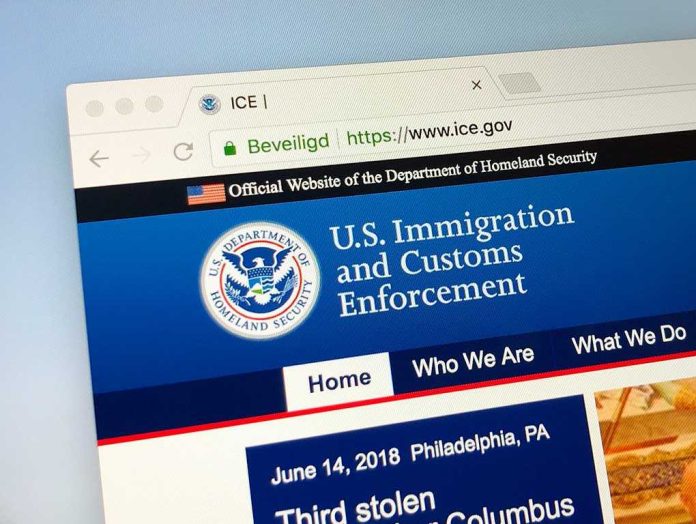
Chicago’s bold move to create “ICE-free zones” raises questions about local autonomy versus federal authority.
Story Overview
- Chicago Mayor Brandon Johnson signs an executive order establishing “ICE-free zones.”
- Federal agents criticize the zones as a hindrance to law enforcement.
- A legal battle ensues as Illinois and Chicago challenge federal actions.
- Protesters see the zones as protection against federal overreach.
Chicago’s ICE-Free Zones: A New Chapter in Federal-Local Tensions
Chicago has taken a groundbreaking step by designating city property as “ICE-free zones,” effectively barring federal Immigration and Customs Enforcement (ICE) agents from conducting raids. Mayor Brandon Johnson’s executive order aims to protect immigrant communities from what city officials describe as unlawful federal overreach. This move comes in response to the Trump administration’s intensified immigration enforcement, which includes deploying National Guard troops to assist federal operations in Chicago.
Federal agents have strongly criticized this decision, arguing that it compromises their ability to enforce immigration laws and puts their operations at risk. They claim that these zones embolden protesters and create a challenging environment for law enforcement. Meanwhile, city officials and activists argue that these zones are crucial for safeguarding vulnerable populations and assert that federal raids on city-owned and non-consenting private properties are a violation of local autonomy.
Legal and Political Confrontations
The creation of “ICE-free zones” has sparked a legal and political confrontation between Chicago and the federal government. On the same day the executive order was signed, Illinois and Chicago filed a lawsuit against the federal deployment of the National Guard, arguing that it constitutes an unconstitutional invasion. A federal judge has scheduled a hearing to address this significant legal challenge. This lawsuit is part of a broader national debate over the rights of cities to resist federal immigration policies and maintain sanctuary city status.
Federal agent says Chicago’s ‘ICE-free zones’ endanger operations, embolden protesters https://t.co/OtYUj8ro3t
— Fox News Politics (@foxnewspolitics) October 7, 2025
Chicago’s decision marks the first time a major U.S. city has formally established “ICE-free zones” through an executive order. The move underscores the city’s commitment to protecting its diverse immigrant population and challenging federal immigration policies that it views as overreaching. Mayor Johnson and Illinois Governor JB Pritzker have been vocal opponents of the Trump administration’s immigration stance, framing the zones as necessary for defending civil liberties.
Impact on Community and Law Enforcement
The establishment of “ICE-free zones” has significant implications for various stakeholders. Immigrant communities, particularly undocumented residents, see these zones as a form of protection against federal raids. Local businesses that choose to participate in these zones are also impacted, as they align themselves with city policies and potentially face federal scrutiny. The broader Chicago population is caught in the midst of this political and legal uncertainty, which could affect upcoming elections and public perceptions of local versus federal authority.
From an operational perspective, federal agents express concerns about the safety and effectiveness of their immigration enforcement activities. The restrictions imposed by “ICE-free zones” create jurisdictional confusion and complicate collaboration between local and federal law enforcement. As the legal battle unfolds, the outcome could set a precedent for other U.S. cities considering similar measures and influence national immigration enforcement strategies.
Broader Implications and Future Developments
In the short term, the establishment of “ICE-free zones” in Chicago is likely to lead to increased tensions between federal and local authorities. The potential disruption of federal immigration operations could lead to heightened protests and activism across the city. In the long term, the legal challenges and public debate surrounding these zones may influence national policies regarding sanctuary cities and local authority over federal enforcement.
The broader implications of Chicago’s move could extend beyond its borders. If successful in their legal battle, Chicago may inspire other cities to adopt similar policies, challenging federal immigration enforcement on a larger scale. As the situation develops, stakeholders from various sectors, including legal experts, civil rights advocates, and law enforcement professionals, will continue to weigh in on the balance of power between local and federal governance.






